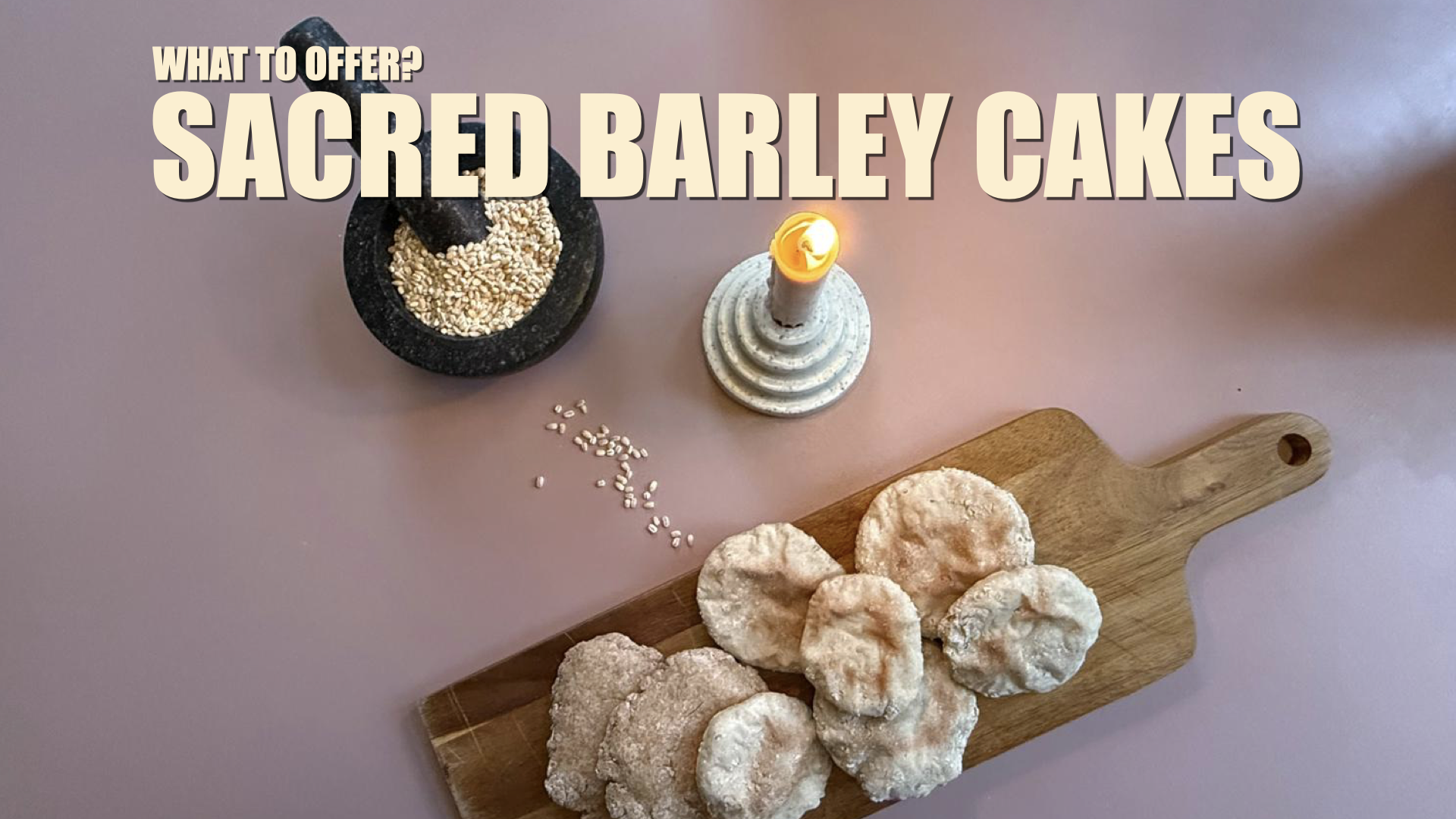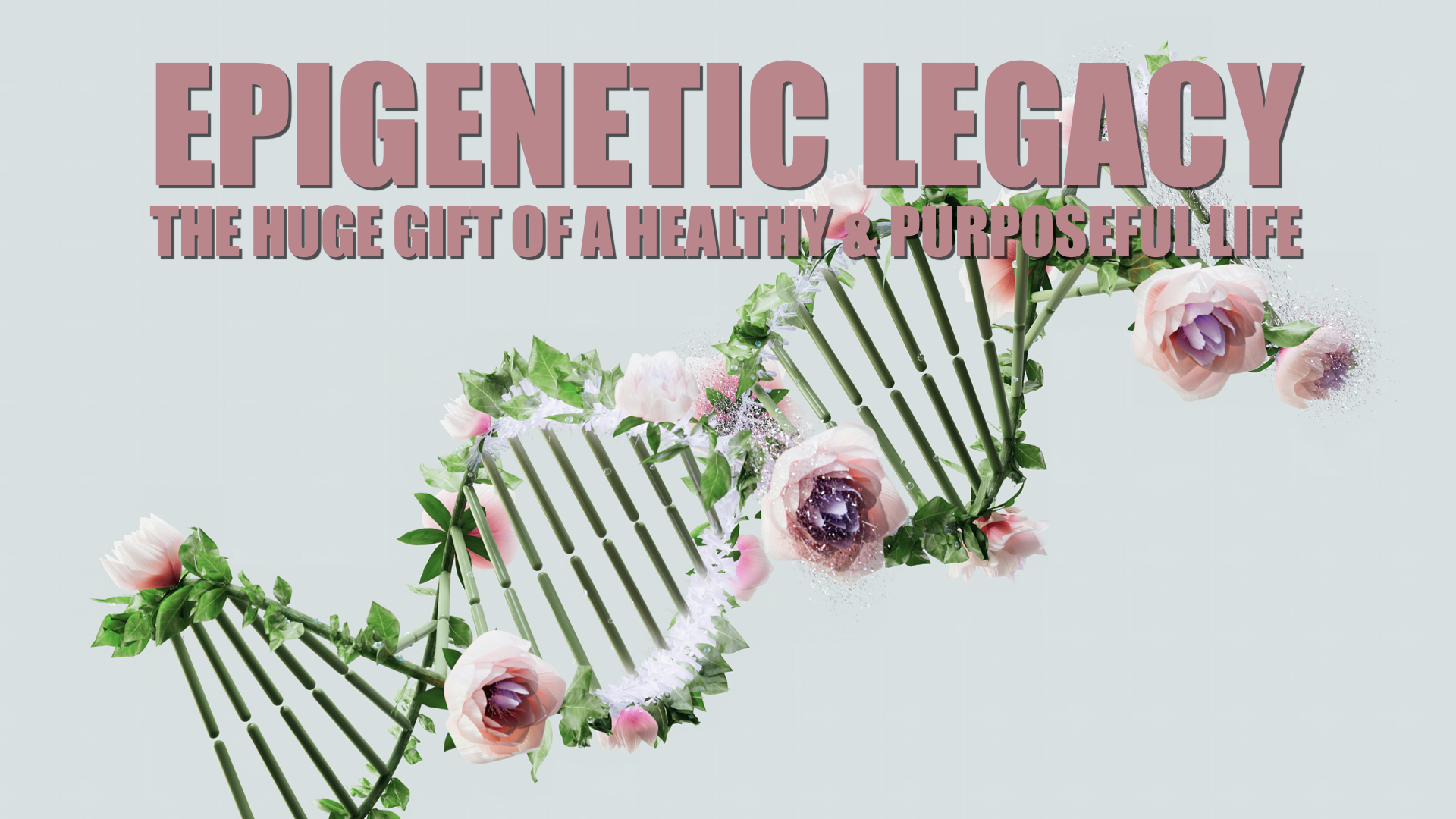We often get asked what to offer to the Divine Kindreds. A very good suggestion is something truly ancient, humble, and deeply sacred: a simple barley cake. This is definitely no modern invention or reconstructed guess — ritual cakes made from barley or other coarse grains have been offered to gods, ancestors, and spirits across the Indo-European world since time immemorial. They are in fact among the oldest known offerings. Here we explore their history, how they were used, and most importantly – how you can bake and offer one yourself!
Want to go straight to the recipe? You’ll find it here (but we always recommend understanding the context of what you’re doing in spirituality).
Why bake sacred cakes?
Because it’s one of the oldest, most authentic offerings we can make. Across the ancient Indo-European world simple barley cakes played a profound role in ritual life. These offerings—made from coarsely ground barley meal mixed with water and baked over fire—may be among the oldest sacred foods shared by the Indo-European peoples, stretching back thousands of years all the way back to the Proto-Indo-European ancestors. So when you bake a barley cake for the Divine Kindreds, you’re participating in a millennia old tradition—across languages, lands, and pantheons.
Barley – the staff of life
These cakes aren’t symbolic stand-ins or modern interpretations; they are direct continuations of ancient (archaic!) rituals performed by our pagan ancestors. Barley, one of the first cultivated grains, was revered across early Indo-European cultures as the staff of life.
In many Indo-European cultures, barley wasn’t just a staple food—it held a sacred status and symbolized the establishment of order and the maintenance of cosmic balance. There is in fact even an etymological connection between the Indo-European root/word for barley/grain – for example Proto-Indo-European yéwos, Sanskrit yáva, Avestan yawa, Lithuanian javai, Old Irish eórna and Ancient Greek zeiá – and its root word for divine, ritual law, ritual purity etc – compare for example later words like English justice, Latin iūs/justitia (“law, right, justice”) and Avestan yaoždā- (”ritually pure”, ”ritually correct”). This semantic overlap suggests a deep cultural association between grain and divinity, sacred order, ritual order and purity.
To sow barley, harvest it, grind it, knead it, and bake it – transforming it into both food and offering gifts – was in itself to perform a sacred cycle—an act of order wrested from chaos, and one of gratitude and connection. It mirrored the societal emphasis on law, structure, and harmony. That’s also why so many Indo-European myths tie barley to gods of law, fire, hearth, and sovereignty: Agni, Demeter, Vesta, Perun, and others. To these gods, barley wasn’t just food—it was sacred substance, a symbol of right relationship between humans, the earth, and the divine.
By preparing and offering these ancient cakes today, we touch a tradition that is not only thousands of years old, but also one of the very first ways humans honored the sacred with the work of their own hands.
Ritual barley cakes in domestic & public spirituality
In Vedic India, these cakes were known as puroḍāsha. Carefully shaped into flat discs and baked without salt or seasoning, they were an essential component of the yajña fire rituals. The cakes were either placed directly into the fire (Agni) or on the hot embers, symbolizing the transformation of earthly offerings into divine nourishment. These offerings played a central role in maintaining the cosmic order, as the cakes were considered to carry the essence of the offerings to the gods, ensuring prosperity and harmony.
The ancient Greeks used barley cakes in both public and private rituals. Known as pémmata (singular: pémma) and another variant called maza, these cakes were used in various forms of festivals, public sacrifice to gods, as well as to ancestors in household rituals. Simple and pure, they were most often laid on altars or burned to send their essence skyward.
The Roman world too had several kinds of sacred barley cakes. Farreum libum was an unleavened sacrificial cake, originally made from barley (later emmer wheat) and simple in flavor. It was used in domestic worship, public ceremonies, and priestly rituals – during festivals like the Vestal Virgins’ ceremonies, the Saturnalia, public sacrifices to gods like Jupiter and in private household offerings during rites of passage, such as weddings etc. In fact, one of the Roman wedding ceremonies (in Rome there were several different ways of getting married) involved a special offering of a farreum libum—this is where the word confarreatio (“joining through farreum cake”) comes from, describing one of the most sacred forms of marriage!
The Celts, known for their deeply agricultural culture, also celebrated the sacred power of barley cakes. Among them, grain-based offerings—especially cakes made of barley or wheat—were part of religious festivals and sacrifices. The Brehon laws reflect the sacred nature of offerings such as bread and cakes made from grain (often barley). One law mentions that grain cakes were used as offerings to local gods during times of crisis or at seasonal festivals like Imbolc, Lughnasadh, and Samhain. Texts like the Mabinogion suggest bread or cake offerings were used at sacred sites (springs, groves, stones).
Seasonal festivals like Lughnasadh involved competitive baking, and cakes made from the season’s new grain were baked and offered to the gods and spirits of fertility and abundance. Imbolc and Beltane also involved food offerings, sometimes of cakes baked over open flames.
Bannocks (bannóc in Old Irish, bonnach in Scots Gaelic and Brythonic, bannuc in Old English, banna in Cornish) were also – no matter what others might say – originally Celtic heavy, unleavened, round and flat cakes of unleavened traditionally made of barley, with examples from Orkney, Shetlands, Scotland, Ireland, northern England etc. The word bannock stems from Latin panicium and panis = bread/dough), even though the Gaelic claim it stems from the word bannach, which means “morsel”, ”nibble” or ”bite”.
One of the most notable Celtic pieces of evidence of barley cakes comes from the discovery of Lindow Man, a well-preserved bog body found in Cheshire, England. Analysis of his stomach contents revealed the presence of a partially burned barley griddle cake. Scholars Anne Ross and Don Robins suggest that such cakes were used in Celtic rituals to select individuals for sacrifice. In this practice, pieces of the cake were distributed, and the person who received the burned piece was chosen for sacrifice.
Barley was a sacred grain for the Norse/Germanic peoples, a staple in the diet and often used in fertility rituals to encourage good harvests. And just like among other Indo-European peoples ritual barley cakes played a key role in the Germanics’ sacrificial feasts dedicated to the gods. Blót feasts often included a meal of meat, bread, and ale, with the barley cakes playing an essential role in the ritual meal.
The Norse/Scandinavians baked sun-shaped barley cakes, offered bread-cakes to Thor, and excavations at the Viking-age trading center of Birka have uncovered carbonized barley flatbreads. Other cakes and breads have also been found in burial and ritual contexts all over Scandinavia.
Bede says that in Solmonaþ the Anglo-Saxons sacrificed little unleavened barley cakes to the gods, so called Sol (hence the month’s name), or hearth-cakes. These were also offered during the harvest. There were also variants called cakebread/cakebrede, cakes that were either buried in the soil or burnt as offerings to solar and earth deities. Even the Saxon Christian king Alfred speaks of his burning of cakes.
The (Persian) Zoroastrians still today offer so called drōn cakes in their yasna, yašt ī drōn, vidēvdād, visperad, and āfrīnagān ceremonies. Originally meaning ”sacred portion”, the drōn are unleavened, palm-sized, round and flat cakes – nowadays made from purified wheat flour, but originally from barley. These cakes were around among the Persians way before Zoroastrianism. The drōn represent the vegetable kingdom and the material world. Clarified butter (ghee) is sometimes spread on the drōn, which then represents the animal kingdom.
The Slavic traditions are – as so often – a bit trickier to nail. This doesn’t mean however that sacred barley cakes didn’t exist among the Slavic peoples. Barley was highly important to them too, often used in ritual, magic and herbal medicine. The ceremonial bread polaznik among Poles and Carpathian Ukrainians is described as from ”coarse flour, without yeast, in a simple form”, and was given as gifts to ”the divine guest” who came during the winter holidays, and was also often (and still is) left at the Christmas table for the souls of deceased ancestors. Other Slavic cake/bread traditions like Kołacz/Kolach/Kalach, and Kukiełka must also stem from this archaic custom. Perhaps also the Serbian Česnica.
Practical Aspects of Ritual Barley Cake Offerings: A Common Thread
Across all these cultures, barley cakes, humble yet sacred, served as some of the earliest offerings to the gods and spirits. The process of baking and offering barley cakes followed a few common principles:
- Very simple ingredients: Barley was originally the primary base, mixed with water and sometimes honey or milk, but no added flavoring or leavening. The simplicity of the cakes reflected the idea of purity and sacredness.
- Baked with reverence: Whether in a sacred fire or on a hot stone, the cakes were baked carefully—their preparation was part of the ritual itself, marking the time of offering as sacred.
- Offered to the Divine: The cakes were typically offered on altars, burned in fire, or buried, symbolizing the transformation of earthly offerings into divine sustenance and seeking to uphold the balance between the mortal and the divine. The burning of the cakes was believed to carry the essence of the offering to the gods, ensuring divine favor.
- Community Rituals: Often, the offerings were shared among the community after the ritual, as part of a communal feast. This was seen as a way to share the blessings of the gods with everyone involved.
So basically a humble grain, worked by human hands, and given with intention.
Recipe for traditional sacred barley cakes (4-6)
Ingredients & Flour–Water Ratio
- Flour (preferably barley, but emmet & oat are very old too. Coarsely ground): 1 cup (2.4 deciliters)
- Water (cold, clean): ~1/3 to 1/2 cup (0.8 deciliters)
- Originally these ritual cakes consisted of the above only. With time though people started adding ingredients. If you want you can add some salt, since that too was very often used for purification.
🔸 Optional: Roast the barley flour first, to enhance the nutty flavor – like ancient álphita. The flower-water ratio is 1 to 3, so you can adjust the recipe depending on how many cakes you want to make. It’s of course great too if you use purified and sanctified water. You’ll find that ritual procedure too on this platform. Start with 1/3 cup and add more water slowly as needed to get a firm, moldable dough—like you’re making a thick unleavened flatbread.
Prayer to barley
Before starting the baking it’s a good idea to say a prayer in the honor of barley. For example:
Barley, golden gift of earth and sky,
Purify, sanctify, blessings nigh.
By fire’s embrace, your essence unfolds,
Thanks to heat, ancient mysteries it holds.
As you roast, release your sacred might,
A cleansing grain, restoring light.
Texture & Consistency
- The dough should be firm but pliable, not sticky or runny.
- You should be able to form it into a small, flat disc with your hands, about 3–4 inches wide and ½ inch thick. The ancients said that it should be ’no thicker than your finger’.
- Too much water will make it puff or break; too little and it’ll crack while baking.
Divide the dough into smaller pieces, roll them in your hands and then flatten them out to the size of your palm.
Cooking Method
- Preheat oven to ~190°C (375°F).
- Place cakes on ungreased oven tray, baking stone or iron skillet.
- Bake for about 15–20 minutes, flipping once halfway if you want a crust on both sides.
- Optional: Brush lightly with ghee after baking (ghee too is an ancient offering gift, symbolizing the cow and the animal kingdom).
On this platform you’ll also find a lot more information about how and when to use your sacred barley cakes!



